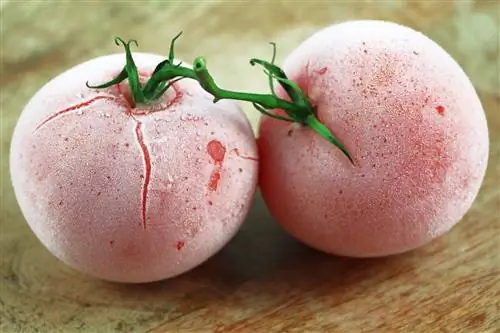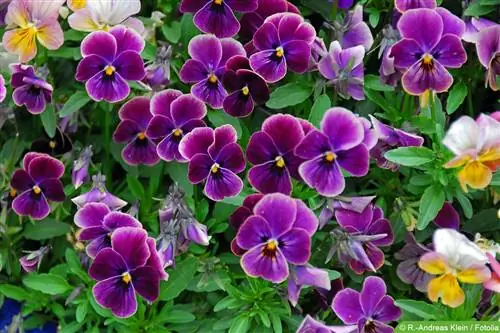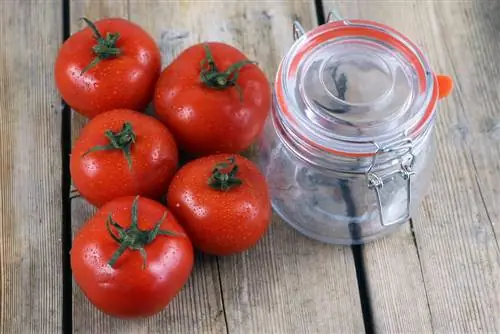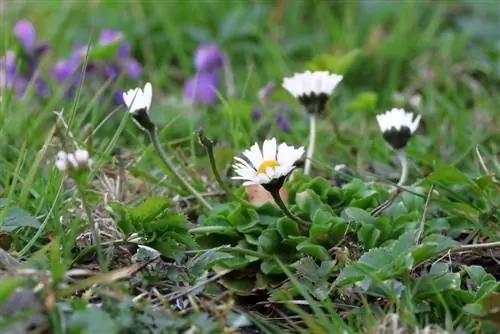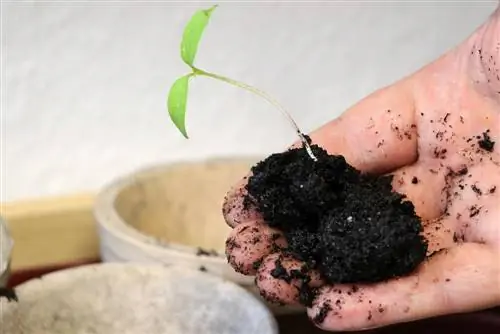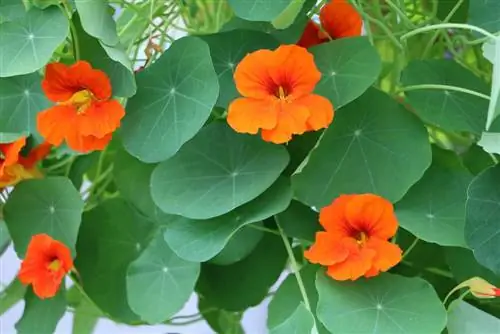- Author admin [email protected].
- Public 2023-12-17 03:39.
- Last modified 2025-01-24 12:45.
As summer goes and autumn comes, the nights get cooler. The following article explains which temperatures the tomatoes can tolerate and how long they can stay outside.
Ideal temperatures
Sunny, warm and dry are the ideal growing conditions for tomatoes. Then, over time, the fruits will become large, plump, juicy, rich red and tasty. Even in the autumn months, the plants can continue to thrive and, when the daytime temperatures are warm, they can still produce flowers from which fruit will develop. The ideal growing temperatures for tomatoes look like this:
- in summer between 18° to 25° Celsius
- ideal for maturation
- not below 15 ° Celsius for a long time
- never below 10° Celsius (often on autumn nights)
Note:
If the temperatures in autumn become too cold at night for a long time, i.e. below 15° Celsius or lower, then the fruits that are still on the bush can no longer develop properly, become deformed, remain small or the flowers fall beforehand off.
Protect from the cold
If there are warm, sunny days from September to October, but at night it starts to get cold and there are strong temperature fluctuations, then it makes sense if the plants have not yet been harvested and should remain outside, they should be kept in the Pack up at night. You should proceed as follows:
- Use plant fleece
- Carefully place around the plants in the evening
- leave no openings
- when it gets warm in the morning, lose weight again
Tip:
A structure made of flexible poles that are placed around the row of tomato plants is also helpful for this, creating a kind of tunnel. The fleece can then be pulled over this in the evening so that each plant does not have to be wrapped individually. In the morning the fleece is simply pulled back again.
Effects of cold weather
It's not just that the fruits of the tomatoes are damaged by constantly colder temperatures and can no longer develop properly. The rest of nature also slowly retreats in autumn. Therefore, the following problems may occur in autumn:
- Bees and bumblebees fly less often
- existing flowers are no longer pollinated
- fruits can no longer form
Harvesting tomatoes
Once summer is slowly over, you should think about harvesting the remaining tomato plants, as very strong temperature fluctuations between nights and days can be very damaging to the fruits and the plants themselves. If a greenhouse is available, this is the suitable location for the fall season. Because here the remaining flowers can still form and the fruits can still ripen.
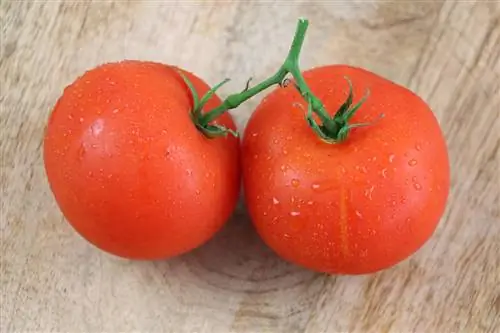
When harvesting, the following should be taken into account:
- also harvest green, firm tomatoes
- put in a box
- lay side by side
- do not stack
- use multiple boxes if necessary
- close well
- no light should be able to enter
- put in a warm place
Tip:
Tomatoes are nightshade plants. The fruits therefore only ripen at night. To turn red when the green fruits are already well formed, they need darkness and a warm place. After about ten to fourteen days, the fruits stored in this way are dark red and ripe and can be enjoyed. To speed up the ripening, it is helpful to add a ripe apple or ripe banana.
Do not expose to frost
If you want to leave your tomatoes on the vine for as long as possible, you should make sure that the night temperatures do not fall below 5° Celsius. And if night frost sets in, the fruit will no longer be edible. Therefore, the harvest should definitely be carried out beforehand. Tomatoes are stored depending on their stage of ripeness:
- not ripe, still green to orange fruits
- at a warm temperature, preferably dark
- up to 20° Celsius optimal
- ripe, red, fresh tomatoes
- cool place
- between 12° and 18° Celsius
Tip:
Tomatoes do not belong in the refrigerator, even if they are to be stored for a short time in summer. The cool temperatures here also take away the flavor of a tomato that has ripened well in the sun. The fruits become pale and no longer taste good. In addition, the cold in the refrigerator also promotes rot.

